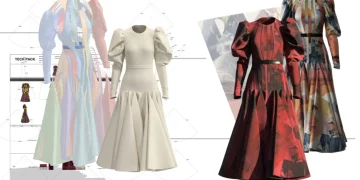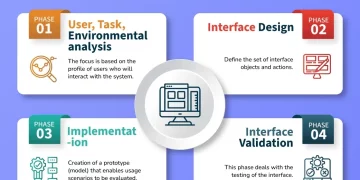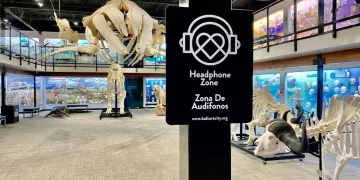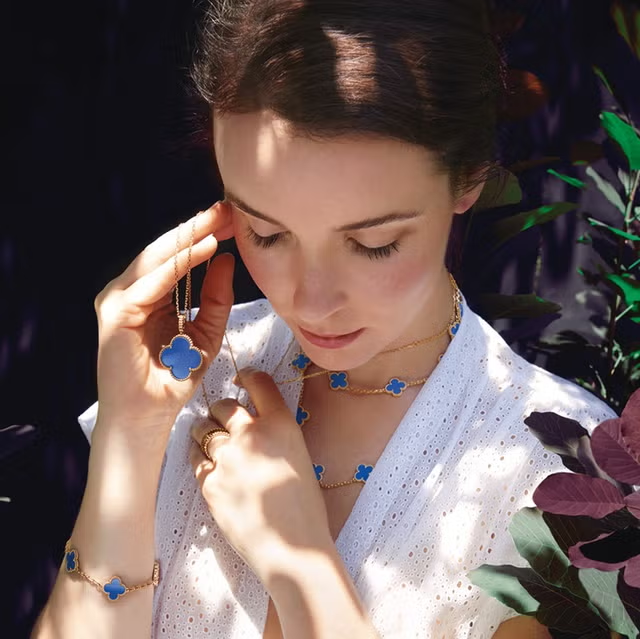Abstract
The rapid advancement of digital technologies has revolutionized numerous industries, and the jewelry sector is no exception. With the rise of virtual platforms and immersive experiences, virtual jewelry exhibitions are becoming increasingly popular, offering an alternative to traditional physical exhibitions. While physical exhibitions have long been the gold standard for showcasing high-end jewelry, providing hands-on experiences, direct consumer engagement, and exclusive networking opportunities, virtual exhibitions are now challenging these conventions. This article explores the potential of virtual jewelry exhibitions, comparing their advantages and limitations to traditional physical exhibitions. By analyzing factors such as accessibility, consumer engagement, technological innovation, and the sensory experience, this article examines whether virtual jewelry exhibitions can truly compete with their physical counterparts or if they are merely a complementary addition to the jewelry industry’s event landscape.
1. Introduction
For years, global jewelry exhibitions have been crucial events for industry professionals, offering opportunities to display the finest pieces of craftsmanship, network with clients, and establish industry trends. These events, such as Baselworld, the Couture Jewelry Show, and the Salon International de la Haute Horlogerie (SIHH), have served as physical hubs where buyers, designers, and consumers could come together to experience the luxury and artistry of fine jewelry firsthand.
However, the digital transformation sweeping across various sectors has led to the rise of virtual exhibitions. While virtual platforms have been used for several years, the COVID-19 pandemic accelerated the trend, with many traditional events turning to virtual formats in response to travel restrictions and social distancing protocols. As a result, the jewelry industry found itself at a crossroads, balancing the allure of physical showcases with the convenience and reach of virtual spaces.
This article investigates whether virtual jewelry exhibitions can truly rival physical exhibitions, considering their effectiveness in terms of accessibility, consumer engagement, technological integration, and the sensory aspects that physical events provide. By examining the evolution of virtual exhibitions and their role in the modern jewelry ecosystem, we aim to understand whether they offer a comparable experience or if they remain an additional avenue for the jewelry industry.
2. The Benefits and Challenges of Physical Jewelry Exhibitions
2.1 The Sensory Experience: Seeing, Touching, and Feeling the Jewelry
One of the most compelling aspects of physical jewelry exhibitions is the sensory experience they provide. Jewelry, by its very nature, is a tactile product—its appeal lies in the weight, texture, and sparkle of the materials. Attendees at physical exhibitions can examine pieces up close, try them on, and appreciate the craftsmanship in a way that is impossible through a screen.
- Visual Appeal: The physical proximity to the jewelry allows attendees to experience its brilliance and intricacy, which is critical for high-end luxury pieces. Lighting, reflections, and angles come into play, enhancing the jewelry’s allure in a way that can be difficult to replicate digitally.
- Tactile Interaction: The ability to touch and feel jewelry pieces, especially those made with rare gemstones and precious metals, offers a deeper appreciation of their quality. For many buyers, this tactile experience plays a significant role in the purchasing decision.
- Emotional Connection: Physical exhibitions provide a unique opportunity to establish an emotional connection between the jewelry and the consumer. The ambiance of the exhibition, the personal interactions with the designers or sales representatives, and the atmosphere of exclusivity contribute to a deeper sense of desire and attachment.
2.2 Networking and Industry Engagement
Physical exhibitions are also invaluable for networking, offering a space where designers, buyers, industry professionals, and influencers can meet in person. These events foster relationships that often lead to new business partnerships, collaborations, and sales.
- B2B Opportunities: Physical exhibitions are essential for business-to-business (B2B) interactions, where jewelry manufacturers, retailers, and wholesalers can discuss bulk purchases, distribution deals, and joint ventures.
- Brand Building: For high-end brands, physical events are an opportunity to maintain their exclusive image and showcase their new collections in a curated, luxury environment. Face-to-face meetings with clients and press provide personal interactions that help build brand loyalty.
- Personalized Customer Experience: Offering tailored consultations, private viewings, and personalized jewelry services are also key features of physical exhibitions that are difficult to replicate virtually.
3. The Rise of Virtual Jewelry Exhibitions
3.1 Accessibility and Global Reach
One of the greatest advantages of virtual jewelry exhibitions is their accessibility. Unlike physical events, which require significant travel, time, and expense, virtual exhibitions are accessible to anyone with an internet connection, opening up the industry to a global audience.
- Wider Audience Reach: Virtual exhibitions eliminate geographic and logistical barriers, allowing designers and brands to reach potential customers, buyers, and industry professionals across the world without the need for physical attendance. This increases the exposure of brands to markets that might have been previously inaccessible.
- Cost-Effectiveness: For brands, virtual exhibitions often involve fewer costs related to booth construction, travel, and accommodations. Additionally, visitors do not incur travel expenses, making the event more inclusive and affordable for a broader range of attendees.
- Convenience and Flexibility: Virtual exhibitions provide the flexibility for visitors to browse collections at their own pace, without the pressure of time constraints. Visitors can explore the entire event from the comfort of their homes, reviewing various pieces and exhibitors as they see fit.
3.2 Innovative Technologies in Virtual Exhibitions
To overcome the inherent limitations of physical absence, virtual jewelry exhibitions have leveraged cutting-edge technologies to enhance the online experience, providing new ways for consumers to engage with jewelry.
- 3D and Augmented Reality (AR): Many virtual exhibitions now incorporate 3D visualization and AR technologies, allowing visitors to virtually try on jewelry pieces, view them from different angles, and better understand how they would look in real life. This technology simulates the physical experience and provides a more immersive interaction compared to static images or videos.
- Live Streams and Interactive Platforms: Virtual exhibitions often feature live-streaming sessions where designers discuss their creations, offer behind-the-scenes insights, or provide tutorials. These interactive elements provide a sense of real-time engagement, giving consumers the feeling of attending a live event.
- Personalized Experiences: Virtual platforms also offer personalized experiences, such as virtual concierge services, live chat with experts, or one-on-one consultations. Consumers can ask questions and receive tailored recommendations, replicating the personalized service found in physical events.
3.3 Data and Analytics
One of the most significant advantages of virtual exhibitions is the ability to collect valuable data and analytics. Virtual platforms allow brands to track visitor behavior, such as which collections are attracting the most attention, how long attendees engage with specific pieces, and which types of consumers are most interested in particular designs.
- Consumer Insights: Brands can use this data to refine their strategies, optimize their collections, and better understand the preferences and needs of their target audience. This level of granular insight is difficult to achieve in physical exhibitions, where interactions are not as easily quantified.
- Targeted Marketing: Virtual exhibitions provide an opportunity for brands to create highly targeted marketing campaigns based on the data they collect. By analyzing consumer behavior during the event, they can create personalized follow-up marketing that is more likely to convert leads into sales.

4. The Challenges of Virtual Jewelry Exhibitions
Despite the many advantages of virtual jewelry exhibitions, there are several inherent challenges that limit their ability to fully replicate the physical experience.
4.1 The Sensory Limitations
While technologies like 3D imaging and AR can offer a more interactive experience, they still fall short when it comes to the full sensory experience provided by physical exhibitions. Jewelry is inherently tactile, and virtual exhibitions cannot convey the weight, texture, or true sparkle of high-end materials.
- Lack of Tangibility: Jewelry’s tactile qualities, such as the feeling of a piece on the skin or the smoothness of a gemstone, are difficult to replicate digitally. The emotional impact of touching and wearing jewelry is something that cannot be fully conveyed through a screen.
- Lighting and Real-Time Interaction: While 3D renderings may mimic the appearance of jewelry, they are still subject to the limitations of screen resolution and lighting. The brilliance and vibrancy of a diamond, for example, are best appreciated in person, where light reflections and details can be fully appreciated.
4.2 Engagement and Networking
While virtual exhibitions have improved their ability to facilitate networking and engagement, they still lack the personal touch and face-to-face interactions that physical events offer.
- Networking Limitations: Virtual exhibitions may feature live chats and video calls, but they do not provide the same opportunities for informal interactions or spontaneous meetings that often lead to valuable business relationships at physical events.
- Emotional Connection: The ability to foster an emotional connection through personal conversations and immersive, physical experiences is something that is hard to replicate virtually. The atmosphere of an exclusive, in-person event plays a crucial role in making attendees feel special and engaged.
5. Conclusion
Virtual jewelry exhibitions have undoubtedly opened up new opportunities for the jewelry industry, providing increased accessibility, innovative technologies, and global reach. They offer brands and consumers the flexibility to engage with collections in ways that were previously not possible, and they allow for data-driven insights that can enhance marketing strategies and sales efforts.
However, when it comes to competing with traditional physical exhibitions, virtual events still have limitations. The sensory aspects of jewelry—its look, feel, and weight—are fundamental to its appeal, and while virtual platforms are making strides in overcoming these challenges, they cannot yet fully replicate the tactile and emotional experience of a physical event. Furthermore, the networking and relationship-building opportunities at physical exhibitions remain invaluable, particularly in the luxury sector.
In conclusion, while virtual jewelry exhibitions offer a viable complement to physical events, they are unlikely to replace them entirely. Instead, they represent an evolution in how the jewelry industry connects with a global audience, providing an alternative that can coexist alongside traditional exhibitions, each serving a different but complementary purpose.

















































